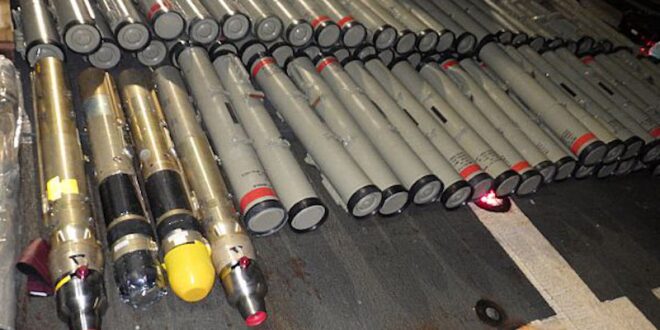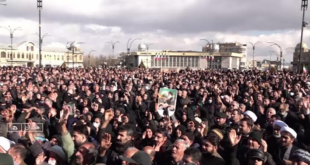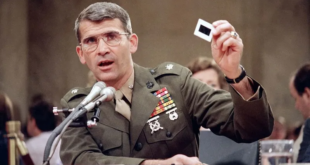The recent attacks in Lebanon against Hezbollah using rigged pagers and walkie-talkies, purportedly orchestrated by Israel, has opened a new front in the conflict which has threatened to envelop the region since October last year. While the audaciousness of these strikes claims most of the headlines, the geopolitics of the region, and the traditional positions states have taken over the decades, were adrift much before the ongoing conflict in Gaza and now, southern Lebanon.
The influential president of the United Arab Emirates (UAE), Mohammed bin Zayed Al Nahyan, conducted his maiden visit to the White House in Washington D.C. where Abu Dhabi was conferred the title of ‘major defence partner’, second only to India. On the surface, it sounds bewildering that the UAE leadership, a close ally of the United States (US) over the years, is only visiting now since assuming presidency in 2022. However, beneath the surface and the swinging changes in the Middle East’s strategic postures over the years lie bare for all to see. From continuing dealings with Russia to normalising ties with the Taliban in Afghanistan, Abu Dhabi often comes off as the state in the region with policies that the US would ideally like to pursue, but cannot, only enjoying the political placebos by association. “We’re in less geostrategic and more geoeconomic phase,” Anwar Gargash, a noted Emirati senior diplomatic advisor said.
Remoulding the defence strategy
One of the most visible metrics of changes in the region’s strategic postures, specifically in the Arab world, is the increased competition in the arms market and a visible loosening of US-centric control of the defence sector. Five Arab states are the top weapons-importing states in the world (between 2019 and 2023), with Saudi Arabia at number two, and the UAE, Qatar, Kuwait, and Egypt also on the list.
While Western equipment still reigns supreme in both the current warehouses of most of these states, and in their aspirational shopping lists, two major factors have shifted how such purchases are and will be considered in the coming time. First is the drastic shifts in how modern conflicts are fought, with asymmetric warfare led by technological innovations taking precedence over conventional formats, witnessed in theatres such as Ukraine and Nagorno-Karabakh between Armenia and Azerbaijan. While much attention is diverted to both the effectiveness and technological advancements pushing asymmetric strategies to the forefront, at the end of the day, it is the much lower (and often negligible) cost of such equipment which is the biggest attraction.
Beyond the technology question of developing capabilities for non-conventional, asymmetric and low-yield conflicts, changes in ideating on strategy and geopolitics have further pushed changes in the regional actors’ requirements. At the core of these changes are political considerations gamed for the future. These are led by facts such as the US looking to disengage in capacity as a net security provider. While this does not mean that Washington will pull out of the region militarily, but it will lessen its presence and posture.
Politically, the US is already more risk-averse in getting involved. Saudi Arabia learnt this the hard way, when in 2019, the drone strikes launched by Yemen’s Houthi militants targeting the Kingdom’s main oil facilities—oil that funds Saudi polity and security almost exclusively—was met with a muted American response. Although some, including Riyadh, thought a Republican dispensation of former president Donald Trump would demonstrate more resolve in providing protection, it was not to be as the real estate mogul prioritised bluster over substance. The reaction to these events of the past five years has been seen on the diplomatic ground within the region. The Saudis normalised their diplomatic relations with Iran and opened negotiation channels with the Houthis in Yemen. The UAE has maintained the basic sanctity of the Abraham Accords despite the events in Gaza. Smaller states, like Bahrain, are also looking to iron out their long-standing clinks with Tehran.
Enter the new defence winners
The aforementioned geopolitical factors means that diversification of risk was mobilised in various sectors. The terminology of ‘strategic autonomy’, arguably travelling from India, is finding many clients across the Arab world. The demand for this kind of autonomy meant that smaller defence manufacturers were able to directly take on Western supremacy in certain areas.
Countries such as China, Türkiye, South Korea, amongst others, have been able to make space for their defence offerings taking advantage of more liberal terms and conditions of engagement between themselves and clients in the region. For example, while the UAE wanted to purchase the MQ-9 Reaper drones from the US for its fleet, conditions were being applied on how and when Abu Dhabi could deploy these assets. To circumvent this, the Emiratis went for the Chinese copy, Wing Loong II. Beijing, at least publicly, had no major conditions attached to its sales.
Türkiye , meanwhile, has made tremendous strides in the unmanned aerial vehicle (UAVs) segment. Turkish President Recep Tayyip Erdogan has found defence cooperation as a very useful conduit to iron out differences with his neighbours in the Middle East while simultaneously getting much-needed funds pumped into the state’s ailing exchequer. In 2023, Saudi Arabia purchased drones from Türkiye’s Baykar Technology, manufacturers of the famous Bayraktar TB2 drones which have been sold to dozens of countries. Other operators of the Baykar family of UAVs include Qatar, UAE (reportedly), Pakistan, Azerbaijan, Libya, amongst others. In January, noted UAE defence conglomerate Edge Group finalised the integration of its Desert Sting guided bombs with the TB2 systems, highlighting a new era of cooperation between Ankara and Abu Dhabi.
South Korea is another defence manufacturer making its presence known. South Korean air defence systems have found takers in both Riyadh and Abu Dhabi, with the latter looking to invest significant political and economic heft behind Seoul’s defence manufacturing goals specifically in military aviation. Egypt also chose South Korea to set up a supply chain for self-propelled howitzers and may sign a deal for 100 T-50 jet trainers in the near future. The fact that South Korea is intricately aligned with and benefitting from Western, particularly American technologies to build its indigenous industries, is another attraction for these Arab powers.
The Israel-Iran conundrum
One of the core attractions of the Abraham Accords signed in 2020 was the probability of Arab powers accessing Israel’s defence technologies. The war in Gaza today complicates these exchanges significantly. Furthermore, Israel’s apprehension to share air superiority in the region with the UAE in way of Abu Dhabi’s wish to purchase top-of-the-line F-35 Lightning-II stealth fighter jets from the US further added to complications.
Meanwhile, for the likes of China, selling weapon systems to both Iran and Arab partners is a balance it navigates. While for Iran, China maybe its most consequential partner; this may not be the same for China, as it looks to bolster defence and economic ties with Saudi Arabia and the UAE. Nonetheless, China and Iran have a robust history of arms supplies where the consistency of these exchanges is prioritised over big-ticket, marketable sales, driven by cooperation built upon anti-Westernism. The fact that on the sidelines of the Gaza war, China has sacrificed its relations with Israel in favour of the Arab position, which is closer to Iran’s than Israel’s, Beijing is keeping the bigger economic picture in mind, as highlighted by Gargash.
Conclusion
Today, the defence market in the Middle East is wide open for aspiring players such as India. While defence industries have been designated as a core engine for India’s economic designs, the competition is stiff, and fast. India’s marketing of its indigenous fighter aircraft LCA Tejas in places such as Egypt was ill-designed and lacked understanding of how Cairo approaches its acquisitions. To compete effectively, New Delhi needs to bridge the wide gap between technological and production prowess, and what its companies and Defence Attaches have been tasked to push.
On paper, India is in a good position to not only sell defence products in the Middle East but co-produce, specifically in areas such as shipping and aeronautics. In practice, much is available to be incubated on the back of great political relations across the region should New Delhi be nimble enough to take these opportunities based on its industrial competitiveness, and not only what political wish would want its industry to achieve.
 Eurasia Press & News
Eurasia Press & News




